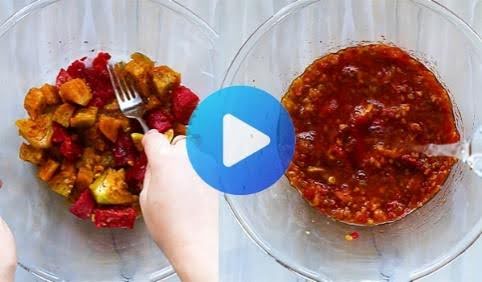Losing weight can feel like a big challenge. Many people I talk to worry that eating healthy means eating boring food. They think they have to give up all the tastes they love just to see the numbers on the scale go down. I understand this worry completely. Food is meant to be enjoyed. The good news is, you don’t have to choose between losing weight and loving your meals. There’s a way of eating that lets you enjoy rich, delicious foods while helping your body become better at burning fat. It’s called the ketogenic diet, or keto for short.
I’ve worked with many people, especially women, who have found success with keto. It’s not just about cutting things out; it’s about changing where your body gets its energy from. And trust me, the foods you get to eat can be incredibly satisfying. Let’s explore how keto works and how it can help you lose weight without feeling like you’re missing out on flavor.
What Exactly is the Keto Diet?
Think of your body like a car that can use two types of fuel. The main fuel most bodies run on is carbohydrates, or carbs. These are found in foods like bread, pasta, rice, sugar, and fruits. When you eat carbs, your body turns them into glucose, which is a type of sugar, for energy.
The keto diet flips this around. It drastically cuts down on the carbs you eat, usually to less than 50 grams per day, sometimes even lower. Instead of carbs, you eat a lot more healthy fats and a moderate amount of protein.
When your body doesn’t have many carbs coming in, it needs to find a different fuel source. So, it starts breaking down fat – both the fat you eat and the fat stored in your body – into molecules called ketones. Your body can then use these ketones for energy instead of glucose. When your body is primarily using ketones for fuel, it’s in a state called ketosis. This is the main goal of the keto diet.
It might sound complicated, but the basic idea is simple: eat very few carbs, eat plenty of healthy fats, and eat enough protein. This switch in fuel can have some interesting effects on the body, particularly when it comes to weight management.
You Might Be Interested In: Delicious Keto Meals Tailored to Your Needs With Custom Keto Diet
Why Keto Can Be Great for Weight Loss, Especially for Women
So, how does switching your body’s fuel source help with losing weight? There are a few key ways keto seems to work well for many people I guide.
1. Appetite Control: One of the biggest hurdles in weight loss is feeling hungry all the time. Fats and protein are much more filling than carbohydrates. When you eat a keto meal rich in healthy fats and protein, you tend to feel satisfied for longer. This can naturally lead to eating fewer calories overall without feeling deprived or constantly battling cravings. Many women I work with report a significant decrease in hunger pangs and sugar cravings after adapting to keto.
2. Stable Blood Sugar: Carb-heavy meals can cause your blood sugar levels to spike and then crash. These crashes often trigger hunger and cravings, especially for more sugary or starchy foods. By keeping carb intake low, the keto diet helps keep blood sugar levels much more stable throughout the day. This stability can mean more consistent energy levels and fewer cravings, making it easier to stick to your eating plan. This can be particularly helpful for women dealing with energy slumps or hormonal fluctuations that affect appetite.
3. Using Stored Fat: When your body is in ketosis, it becomes very efficient at burning fat for energy. This includes the fat stored in your body – the fat you want to lose. Your body essentially turns into a fat-burning machine.
4. Water Weight Loss (Initially): When you first cut down on carbs, your body releases stored water. Carbs are stored in the body along with water, so reducing carb intake leads to a quick initial drop in water weight. While this isn’t fat loss, seeing the scale move down quickly can be very motivating at the start of a weight loss journey.
5. Potential Hormonal Benefits: Some research suggests that keto might have positive effects on certain hormones related to weight and metabolism, like insulin. Insulin is a hormone that tells your body to store fat. Lowering carb intake helps lower insulin levels, which can encourage fat burning instead of fat storage. For women dealing with conditions like Polycystic Ovary Syndrome (PCOS), which often involves insulin resistance, keto is sometimes recommended by doctors (always consult your physician) as it may help improve insulin sensitivity and manage symptoms, including weight gain.
It’s important to remember that everyone’s body is different. Keto might work wonderfully for one person and be less suitable for another. Factors like genetics, lifestyle, activity level, and underlying health conditions all play a role. As a consultant, I always emphasize finding an approach that feels sustainable and healthy for the individual.
Busting the Myth: Keto is NOT Bland
Now, let’s tackle that big worry: flavor. I hear it all the time – “If I cut out carbs and sugar, won’t my food taste like cardboard?” Absolutely not. In fact, I find that many people discover a whole new world of flavors when they start eating keto.
Why? Because fat carries flavor. Think about it – butter, olive oil, creamy sauces, fatty cuts of meat, cheese. These are things that make food taste rich and satisfying. Traditional low-fat diets often remove these flavorful elements, leading to bland meals that rely heavily on sugar or salt for taste.
Keto embraces healthy fats. This means you can cook your vegetables in butter or olive oil, add avocado to your salads, enjoy cheese, and eat fatty fish like salmon. Protein sources like steak, chicken thighs, and eggs are naturally flavorful and keto-friendly. You learn to appreciate the natural tastes of whole foods, enhanced by fats and seasonings, rather than covered up by sugary sauces or breading.
Your Keto Kitchen: Flavorful Staples
Stocking your kitchen with the right foods is key to making delicious keto meals. Here are some staples that form the foundation of a flavorful keto diet:
- Healthy Fats: These are crucial.
- Avocado and Avocado Oil
- Olive Oil (extra virgin for dressings, regular for cooking)
- Coconut Oil and MCT Oil
- Butter and Ghee (clarified butter)
- Nuts and Seeds (almonds, walnuts, macadamia nuts, chia seeds, flax seeds – in moderation)
- Nut Butters (unsweetened almond or peanut butter – check labels for added sugar)
- Proteins: Choose quality sources.
- Fatty Fish (salmon, mackerel, sardines, trout)
- Meat (beef, pork, lamb – including fattier cuts)
- Poultry (chicken thighs and legs are often more flavorful than breast, but breast is fine too; turkey)
- Eggs (a keto superstar)
- Full-Fat Dairy (cheese, heavy cream, sour cream, cream cheese – if you tolerate dairy)
- Low-Carb Vegetables: Focus on those that grow above ground.
- Leafy Greens (spinach, kale, lettuce, arugula)
- Cruciferous Veggies (broccoli, cauliflower, Brussels sprouts, cabbage)
- Others (zucchini, bell peppers in moderation, asparagus, green beans, mushrooms, celery, cucumbers)
- Flavor Enhancers: Don’t forget these.
- Herbs (fresh or dried – basil, oregano, cilantro, parsley, rosemary, thyme)
- Spices (cumin, paprika, chili powder, garlic powder, onion powder, cinnamon, nutmeg – check for added sugars in blends)
- Salt (Himalayan pink salt or sea salt provide trace minerals)
- Pepper
- Mustard (check labels for sugar)
- Vinegars (apple cider vinegar, red wine vinegar)
- Lemon and Lime Juice
- Sugar-Free Sweeteners (stevia, erythritol, monk fruit – use sparingly)
Having these ingredients on hand makes it easy to whip up tasty meals without much fuss.
Cooking Up Flavor: Keto Meal Strategies
Knowing what foods to eat is one thing; making them taste amazing is another. Here are some simple strategies I recommend for maximizing flavor on a keto diet:
1. Embrace Healthy Fats: Don’t be afraid to use fats in your cooking and meal preparation.
* Sauté vegetables in butter, ghee, or coconut oil.
* Drizzle olive oil over salads and cooked veggies.
* Add avocado slices or guacamole to meals.
* Use heavy cream or cream cheese to make creamy sauces for meats or vegetables (just watch the carb count in store-bought sauces – making your own is often better).
* Top dishes with cheese or nuts for extra richness and texture.
2. Master Herbs and Spices: These are your secret weapons for flavor without carbs or sugar.
* Experiment with different combinations. Italian seasoning on chicken, cumin and chili powder for a taco flavor on ground beef, dill with salmon, rosemary with pork.
Introducing: Benefits of Custom Meal Plans With Keto Diet
* Use fresh herbs whenever possible – they add brightness. Cilantro in guacamole, basil with tomatoes and mozzarella, parsley sprinkled over finished dishes.
* Make your own spice blends to control ingredients and avoid hidden sugars or fillers found in some pre-made mixes.
* Don’t forget garlic and onion powder – they add a savory base to almost anything.
3. Make Smart Swaps: Craving old favorites? There are often delicious keto alternatives.
* Rice: Use cauliflower rice (grated cauliflower) or broccoli rice. You can buy it frozen or make it fresh in a food processor. Sauté it with butter and seasonings.
* Pasta: Try zucchini noodles (“zoodles”), spaghetti squash, or shirataki noodles (made from konjac root). Pair them with keto-friendly sauces like pesto, Alfredo, or a meat sauce.
* Potatoes: Mashed cauliflower (steamed cauliflower blended with butter, cream, salt, and pepper) can be surprisingly satisfying. Roasted radishes or turnips can mimic roasted potatoes.
* Bread/Wraps: There are many recipes online for keto bread made with almond or coconut flour. Lettuce wraps or low-carb tortillas are great for sandwiches or tacos.
* Sugar: Use keto-approved sweeteners like stevia or erythritol in moderation if you need a touch of sweetness in drinks or desserts.
4. Choose Flavorful Cooking Methods: How you cook your food makes a big difference.
* Roasting: Brings out the natural sweetness in vegetables like Brussels sprouts, broccoli, and bell peppers. Toss them in olive oil and seasonings before roasting at a high temperature.
* Grilling/Searing: Creates a delicious crust on meats like steak, chicken, and fish. High heat locks in juices and adds smoky flavor.
* Sautéing: Quick cooking in fat over medium-high heat is great for vegetables and smaller cuts of meat.
* Slow Cooking: Excellent for tougher cuts of meat, making them tender and flavorful. Perfect for pulled pork or beef roasts using keto-friendly liquids and seasonings.
By combining these strategies, you can create meals that are not only keto-compliant but also incredibly tasty and satisfying.
Delicious Keto Meal Ideas
To give you a better picture, here are some examples of flavorful keto meals you could enjoy:
- Breakfast:
- Scrambled eggs cooked in butter with sautéed spinach, mushrooms, and topped with shredded cheddar cheese and a side of avocado slices.
- A keto smoothie made with unsweetened almond milk, a scoop of protein powder, a tablespoon of chia seeds, a handful of spinach, and a quarter cup of berries (like raspberries or blueberries).
- Bacon or sausage patties with fried eggs.
- Lunch:
- A large salad with mixed greens, grilled chicken or salmon, cucumber, olives, feta cheese, and a creamy avocado or olive oil vinaigrette dressing.
- Tuna or chicken salad made with mayonnaise (check for sugar-free), celery, and served in lettuce cups or with celery sticks.
- Leftover keto dinner from the night before (batch cooking saves time).
- Dinner:
- Baked salmon seasoned with dill and lemon, served with asparagus roasted in olive oil and garlic.
- Steak cooked to your liking with a side of creamed spinach (spinach cooked with heavy cream, cream cheese, and garlic).
- Chicken thighs baked with herbs and served with a side of cauliflower mash.
- Taco salad with seasoned ground beef, lettuce, cheese, sour cream, salsa (low sugar), and guacamole.
- Snacks:
- A handful of almonds or macadamia nuts.
- Celery sticks with cream cheese or unsweetened almond butter.
- Hard-boiled eggs.
- String cheese or cubes of cheddar cheese.
- Pork rinds (check labels for weird ingredients).
- Olives.
See? These meals sound anything but boring. They are full of flavor, textures, and nutrients that keep you full and help your body burn fat.
Keto and Your Exercise Routine
Exercise is always a beneficial part of a healthy lifestyle, and it pairs well with keto for weight loss and overall well-being. However, there are a few things to keep in mind, especially when you first start the diet.
When you switch from using carbs to using fat for fuel, your body goes through an adaptation period. During the first few weeks, some people find their exercise performance dips slightly. You might feel a bit less energetic during workouts. This is normal. As your body becomes better at using ketones for energy (becomes “keto-adapted”), your energy levels and performance usually return to normal, and sometimes even improve, especially for endurance activities.
What kind of exercise is best? A combination usually works well:
- Strength Training: Lifting weights or doing bodyweight exercises helps build and maintain muscle mass. Muscle burns more calories at rest than fat does, so preserving muscle is important for metabolism, especially during weight loss. This is key for women, as muscle mass naturally tends to decrease with age.
- Cardiovascular Exercise: Activities like walking, jogging, swimming, or cycling are great for heart health and burning calories. Start slowly if you’re new to exercise or keto, and gradually increase intensity and duration as you feel comfortable.
- Flexibility and Mobility: Stretching, yoga, or Pilates can help with flexibility, reduce stress, and prevent injuries.
Listen to your body. Don’t push yourself too hard, especially in the beginning. Stay well-hydrated, and make sure you’re getting enough electrolytes (sodium, potassium, magnesium), as these can be flushed out more when carb intake is low. Adding a pinch of salt to water or using electrolyte supplements (check for sugar) can help.
Navigating Potential Keto Challenges
While keto offers many benefits, it’s good to be aware of potential challenges.
- The “Keto Flu”: As your body adapts to using fat for fuel, you might experience temporary symptoms like headache, fatigue, nausea, irritability, and brain fog. This is often called the “keto flu.” It usually lasts from a few days to a week. Staying hydrated and ensuring adequate electrolyte intake can significantly lessen or prevent these symptoms.
- Digestive Changes: Some people experience constipation or diarrhea initially. Eating enough fiber from low-carb vegetables (like leafy greens, broccoli, avocado) and drinking plenty of water usually helps.
- Social Situations: Eating out or attending social events can require some planning. Look at menus ahead of time, focus on meat/fish and vegetable options, ask for sauces on the side, and don’t be afraid to request modifications (like swapping fries for a side salad).
- Nutrient Deficiencies: Because some food groups are restricted, it’s important to focus on eating a variety of nutrient-dense keto foods. Pay attention to getting enough fiber, potassium, magnesium, and other micronutrients. Some people choose to take a multivitamin as a backup.
Most importantly, listen to your body. Keto is not right for everyone. If you have any pre-existing health conditions, especially kidney disease, liver disease, or type 1 diabetes, it is crucial to talk to your doctor before starting a ketogenic diet. It’s always best to approach any significant dietary change with awareness and professional guidance if needed.
Making Keto Work for You Long-Term
For keto to be successful for weight loss and health improvements, it needs to be something you can stick with. Strict keto might be great initially, but some people find it helpful to transition to a slightly more flexible low-carb approach once they reach their goals or become well-adapted.
The key is finding a sustainable way of eating that includes whole, unprocessed foods, limits sugar and refined carbs, and incorporates healthy fats and adequate protein. Whether that’s strict keto, moderate low-carb, or simply a focus on whole foods depends on your individual needs, preferences, and how your body responds.
Don’t aim for perfection. Aim for consistency. If you have an off meal or day, just get back on track with your next meal. Focus on the delicious, satisfying foods you can eat, rather than dwelling on what’s restricted. Experiment with recipes, find keto versions of your favorite dishes, and enjoy the process of nourishing your body in a way that supports your health and weight loss goals without making you feel deprived. Losing weight doesn’t have to mean losing flavor, and the power of keto recipes is proof of that.
Related YouTube Video
Final Thoughts
From my experience helping people navigate their weight loss journeys, the fear of bland food is a major roadblock. Keto really turns that idea on its head. By focusing on healthy fats, quality proteins, and non-starchy vegetables seasoned well with herbs and spices, you can create meals that are both incredibly flavorful and supportive of your body’s fat-burning processes. Remember to listen to your body, stay hydrated, ensure you get enough electrolytes, and consider talking with a healthcare professional before making big dietary changes, especially if you have underlying health conditions. Finding enjoyment in your food is key to making healthy changes stick for the long haul.







